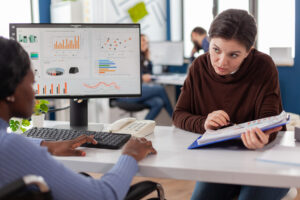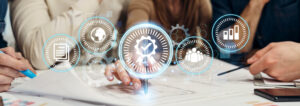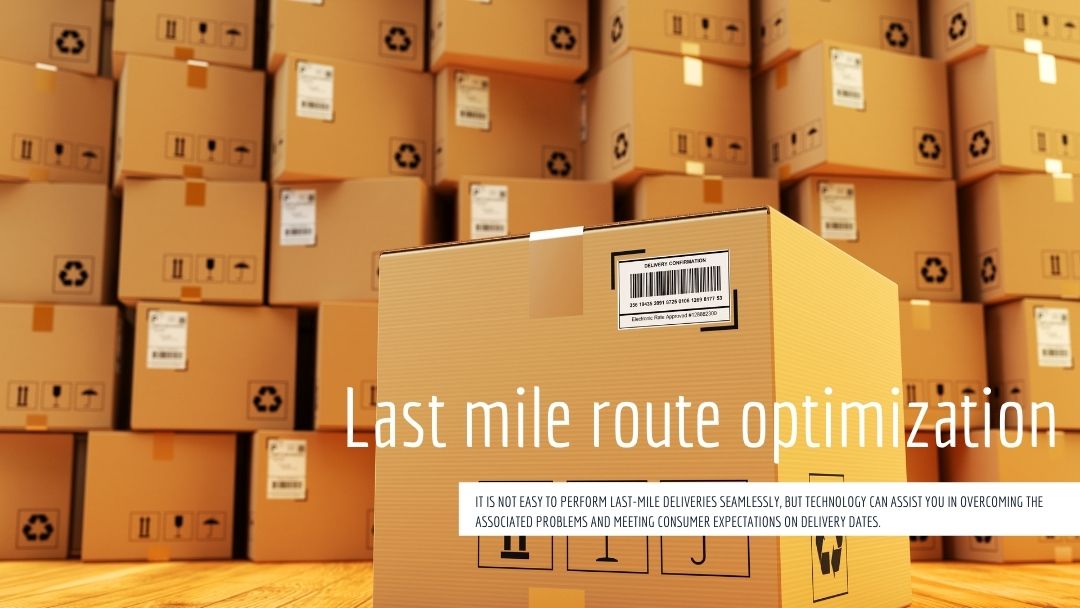
How last mile route optimization tech can facilitate efficient Supply chain operations
In the logistics and supply chain industry, last-mile delivery is the primary driver of customer satisfaction. It has a direct impact on profitability because it is the most time-consuming, costly, and unpredictable aspect of the entire process. Tight delivery timetables, fluctuating fuel costs, and little control over delivery teams make last-mile delivery difficult to manage.
It is not easy to perform last-mile deliveries seamlessly, but technology can assist you in overcoming the associated problems and meeting consumer expectations on delivery dates.
Table of Contents
Last Mile route optimization improves the effectiveness of your supply chain while also providing a positive client experience. It can assist you in the following ways:
Cost Reduction
Using AI-powered sophisticated, route optimization solutions allow you to plan, schedule, and re-route your trips more efficiently. Planning your delivery schedule ahead of time allows you to reduce travel time and fuel expenditures from one customer address to the next. Dynamic re-routing enables you to maximize time slots, prioritize deliveries, and communicate route changes to drivers in real time.
Enhances Efficiency
Reduce operational costs by lowering fuel expenditures and monitoring driver performance with a route optimization system tailored to your needs. Using multi-stop route planning saves you time that would otherwise be spent manually plotting routes and calculating fuel prices. The software selects the shortest and fastest routes, allowing you to deliver more in less time while also optimizing fuel use and lowering your carbon footprint.
Ensures Transparency
Last mile route optimization software includes real-time tracking and digital delivery receipts. Customers can choose their preferred delivery times and alternate delivery locations. They can be kept up to date on package status and delivery times. You can keep track of each item and avoid fraudulent activity with real-time driver surveillance.
Easy rerouting and rescheduling
Route planning and scheduling are critical for any logistics company. You may be required to reroute delivery orders due to unusual circumstances such as traffic, road conditions, rapid weather change, address discrepancy, and emergency deliveries. Route optimization software will aid in faster rescheduling and faster communication with drivers in order to keep delivery rates within time constraints.
Easy rerouting and rescheduling
Route planning and scheduling are critical for any logistics company. You may be required to reroute delivery orders due to unusual circumstances such as traffic, road conditions, rapid weather change, address discrepancy, and emergency deliveries. Route optimization software will aid in faster rescheduling and faster communication with drivers in order to keep delivery rates within time constraints.
Using Last mile route optimization/planning solutions and approaches, leading logistics organizations are successfully planning their transportation routes and timetables to satisfy the growing degree of client expectations. Route optimization software optimizes route planning for a variety of purposes, including pickup planning, route identification, cargo arrival time estimation, and scheduled deliveries.
Distribution networks in India are complicated webs containing components such as retail networks, wholesale networks, and logistic infrastructure. Logistics is the lifeline of the Indian economy, and it is undergoing rapid transformation. However, because of their complexity, logistics networks are sometimes fraught with uncertainty.
Few challenges faced by last mile logistics and delivery businesses are:
Delivery delays
Late delivery degrade the customer experience and result in revenue loss. A minute delay in timeframes might cause consumer displeasure and necessitate rescheduling for your company. Managing disgruntled consumers and re-planning delivery would consume a large amount of your company’s time, resources, and capital.

Managing delivery density
Managing delivery workloads becomes more difficult when order numbers fluctuate. While logistics companies deal with the flood of deliveries during holiday or discount seasons, they must also concentrate on producing revenue during periods of infrequent ordering. Regardless of supply chain obstacles, customers want items to be delivered on time and to their liking.

Optimizing last-mile delivery costs
Last-mile delivery has become expensive for logistics companies due to rapidly expanding competition and changing client expectations. According to a Capgemini research report, last mile services account for 41% of supply chain expenditures. To keep up with the competition, offering competitive delivery rates or altogether waiving them is becoming the new norm. Customers desire speedier deliveries, which raises costs and makes maintaining profitability more difficult.
Key Takeaway
Route optimization technology is a delivery innovation that empowers supply chain enterprises that provide last mile delivery. It provides end-to-end transparency throughout the delivery process, including return management. Using technology to streamline your last mile operations and scale your organization by automating route planning and delivery management processes while providing excellent customer service.
How can MIMO help?
Last mile delivery optimization can help you make faster deliveries. So, are you ready to improve the efficiency of your last mile distribution network? MIMO can assist your company in going online by providing the best last mile services in the region.
The ability to effectively manage the transportation delivery process is becoming increasingly necessary in today’s world. MIMO Technologies provides a technologically advanced platform for efficiently transporting goods and items and achieving high levels of accuracy in last mile delivery.
Our field officers are trained to complete time-sensitive work and deliver it to your customer in India’s most remote locations within agreed-upon deadlines. Over 14000 field officers work in a variety of rural and semi-urban settings.
Like this article?
More To Explore

Why is Internal Audit Important for Strengthening Banking Organizations?
+91 1141182211 IA procedures are the cornerstone of a robust banking system. They act as a powerful tool for banks

What are the Numerous Advantages of Auditing and Assurance Services?
+91 1141182211 Financial transparency, risk management, and improved internal controls are all crucial aspects of a healthy organization. But how

Streamlining the Journey: Making Your CPV Process Faster and More Efficient
+91 1141182211 In today’s competitive landscape, ensuring consistent product quality while maintaining efficiency is paramount. For industries like pharmaceuticals and







